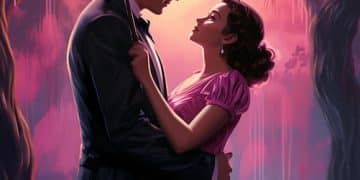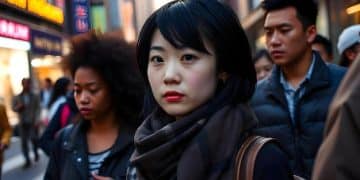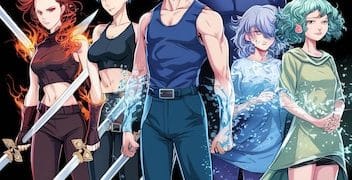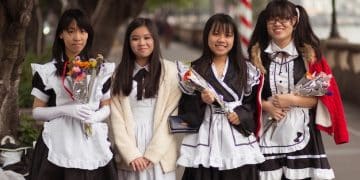Unveiling the Hidden Symbolism: A Deep Dive into J-Dramas

Beyond the Subtitles: Unveiling the Hidden Symbolism in J-Dramas involves analyzing visual cues, cultural references, and recurring motifs that enhance storytelling and provide deeper insights into characters and themes.
Dive into the fascinating world of Japanese dramas and discover how Beyond the Subtitles: Unveiling the Hidden Symbolism in J-Dramas can elevate your viewing experience.
The Allure of Hidden Symbolism in J-Dramas
Japanese dramas, or J-Dramas, are celebrated for their compelling narratives and rich cultural tapestry. Yet, Beyond the Subtitles: Unveiling the Hidden Symbolism in J-Dramas often lies beneath the surface. These dramas frequently employ subtle visual cues, cultural metaphors, and recurrent motifs that enrich the storyline and deepen our understanding of characters and themes.
This exploration into the nuanced layers of J-Dramas unveils how understanding these symbols can transform a simple viewing into a profoundly engaging experience. By decoding these hidden meanings, viewers gain a greater appreciation for the meticulous craftsmanship that goes into creating these captivating stories.
Why Symbolism Matters in J-Dramas
Symbolism adds depth and layers to the narrative, encouraging viewers to look beyond the immediate plot. It provides a richer, more immersive experience by connecting with cultural values and emotional undertones.
Recurring symbols can highlight character development, thematic concerns, and emotional states, providing a framework for appreciating the intricate complexities of the storyline.
- Visual Symbols: Recurring images like flowers or specific locations.
- Cultural References: Allusions to Japanese history, mythology, and traditions.
- Motifs: Repeated patterns or ideas that reinforce central themes.
Ultimately, recognizing and interpreting these symbols enriches the viewer’s understanding and appreciation of the drama’s artistic merit and cultural significance.
Deciphering Visual Cues: The Language of Imagery
Visual cues in J-Dramas are powerful instruments for storytelling. These cues range from the deliberate use of color to the strategic placement of objects on screen, conveying messages that may not be apparent in the dialogue alone. Beyond the Subtitles: Unveiling the Hidden Symbolism in J-Dramas, understanding these visual cues opens up a deeper appreciation for the artistry embedded in each scene.
The meticulous composition of scenes is often designed to evoke emotional responses and add layers of meaning to the storyline. Paying attention to these visual elements allows viewers to gain a richer understanding of the drama’s narrative and thematic intentions.

The Power of Color
Colors are crucial in visual storytelling. In J-Dramas, the strategic use of color can enhance the emotional tone of a scene, highlight character traits, and underscore thematic elements.
For example, red might signify passion, danger, or urgency, while blue could represent tranquility, sadness, or introspection. Recognizing these color associations can significantly enhance your understanding of a scene’s emotional subtext.
- Red: Passion, Danger, Urgency
- Blue: Tranquility, Sadness, Introspection
- White: Purity, Innocence, New Beginnings
- Black: Mourning, Mystery, Endings
Ultimately, color symbolism serves as a visual shorthand, allowing filmmakers to convey complex emotions and ideas in an instant, enhancing the overall impact of the scene.
Cultural References as Storytelling Tools
Japanese dramas are deeply embedded in their culture, and understanding these references is essential to fully appreciate the stories. Beyond the Subtitles: Unveiling the Hidden Symbolism in J-Dramas, cultural references add depth and authenticity, enriching the narrative with layers of historical and social context.
These references can range from historical events and traditional practices to popular folklore and mythological figures. Recognizing these elements allows viewers to connect with the drama on a more profound level, gaining insights into the values, beliefs, and customs of Japanese society.
Historical Allusions
Many J-Dramas weave historical events into their narratives, offering a backdrop that influences character motivations, plot developments, and thematic explorations.
Allusions to significant periods in Japanese history, such as the Edo or Meiji eras, enhance the drama’s authenticity and provide a deeper understanding of the challenges and triumphs faced by characters.
- Edo Period: Often associated with samurai culture and traditional social hierarchies.
- Meiji Era: A period of modernization and Western influence.
- World War II: Dramas may explore themes of resilience and reconciliation.
Ultimately, understanding these historical references can provide a fuller appreciation of the drama’s narrative depth and cultural relevance.
Motifs and Recurring Patterns: The Threads That Bind
Motifs are recurrent elements, such as images, sounds, or ideas, that reinforce the drama’s central themes. Beyond the Subtitles: Unveiling the Hidden Symbolism in J-Dramas, these patterns act as subtle reminders, deepening the storyline’s emotional and thematic resonance.
Recognizing these recurring elements can help viewers piece together the underlying message of the drama. Motifs can shed light on character arcs, highlight emotional conflicts, and enhance the viewer’s overall engagement with the narrative.
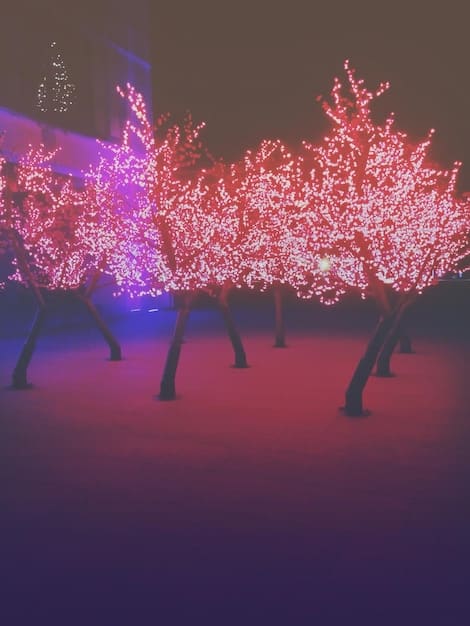
The Significance of Repetition
Repetition is a powerful tool in storytelling. When a specific image, phrase, or scenario appears multiple times throughout a drama, it signals its importance to the overall narrative.
These recurring patterns can emphasize key themes, reveal hidden connections between characters, and provide insights into their emotional states. Noticing these repeated elements allows viewers to uncover deeper layers of meaning within the drama.
- Cherry Blossoms: Symbolize fleeting beauty and the transient nature of life.
- Rain: Often represents sadness, reflection, or emotional cleansing.
- Mirrors: Can signify self-reflection, duality, or distorted perceptions.
Ultimately, paying attention to motifs and recurring patterns enhances the viewer’s ability to interpret the drama’s deeper meanings and appreciate its artistic complexity.
Character Archetypes and Symbolic Roles
J-Dramas often utilize distinct character archetypes to represent broader themes and ideas. Beyond the Subtitles: Unveiling the Hidden Symbolism in J-Dramas, these archetypes serve as symbolic representations of cultural values, societal roles, and universal human experiences.
Recognizing these archetypes helps viewers understand the roles characters play in conveying the drama’s message. Understanding such symbolic roles enriches the viewing experience, adding depth and layers to the narrative.
Common Archetypes in J-Dramas
Exploring common archetypes in J-Dramas allows for a deeper understanding of the characters and their symbolic roles. These recurring character types often embody specific traits or fulfill certain narrative functions.
Understanding these archetypes provides a framework for interpreting the characters’ actions and motivations, as well as their contribution to the drama’s overall thematic message.
- The Stoic Hero: Represents resilience and unwavering principles.
- The Innocent Maiden: Embodies purity and moral integrity.
- The Corrupt Official: Symbolizes societal decay and abuse of power.
Ultimately, recognizing these archetypes enhances the viewer’s understanding of the drama’s narrative framework and thematic intentions.
Translating Nature’s Language: Symbolism in Natural Elements
Nature plays a significant role in J-Dramas, often symbolizing profound thematic elements. Beyond the Subtitles: Unveiling the Hidden Symbolism in J-Dramas, the natural world can enhance the drama’s emotional and thematic resonance.
Recognizing these natural symbols helps viewers appreciate the layers of meaning woven into the narrative. Understanding the symbolism in natural elements enriches the viewing experience, adding depth and layers to the narrative.
Recurring Natural Symbols
Analyzing nature’s language in J-Dramas reveals the rich symbolism embedded in natural elements. These symbols contribute to the drama’s overall depth and significance.
These symbols can range from serene landscapes representing inner peace to stormy weather symbolizing emotional turmoil. Recognizing these symbols enhances the viewer’s understanding of the drama’s thematic intentions.
- Mountains: Symbolize obstacles, endurance, and spiritual journeys.
- Rivers: Represent the passage of time, change, and emotional flow.
- Forests: Can signify mystery, danger, but also introspection and self-discovery.
Ultimately, understanding these natural symbols can provide a fuller appreciation of the drama’s narrative depth and cultural relevance.
| Key Point | Brief Description |
|---|---|
| 🌸 Cherry Blossoms | Represent the fleeting nature of beauty and life. |
| 🌧️ Rain | Symbolizes sadness, reflection, or emotional cleansing. |
| 🏯 Historical Allusions | References to the Edo or Meiji eras for historical context. |
| ⛰️ Mountains | Symbolize endurance, obstacles, and spiritual journeys. |
Frequently Asked Questions
▼
Symbolism enriches the narrative, adds depth, and encourages viewers to look beyond the surface. It connects with cultural values and emotional undertones.
▼
Visual cues such as color, object placement, and scene composition convey messages that may not be explicit in the dialogue, adding layers of meaning.
▼
Cultural references add depth and authenticity, enriching the narrative with historical and social context. They provide a deeper understanding of Japanese society.
▼
Cherry blossoms are a common motif, symbolizing fleeting beauty and the transient nature of life. Rain can represent sadness, reflection, or emotional cleansing.
▼
Character archetypes represent broader themes and ideas, serving as symbolic representations of cultural values, societal roles, and universal human experiences.
Conclusion
Beyond the Subtitles: Unveiling the Hidden Symbolism in J-Dramas enhances the depth, cultural richness, and immersive engagement of the viewing experience. Decoding visual cues, understanding cultural references, and recognizing recurring motifs allows for profound appreciation of Japanese storytelling traditions.

